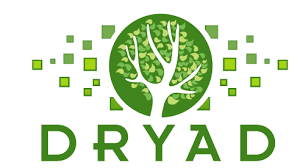The Cancer Moonshot Part 1

On January 12, 2016, President Obama held his final State of the Union speech. In this speech he committed the United States to a “cancer moonshot.” Click here to view an excerpt of that part of the speech from CNN.
He closed this part with a powerful and moving statement:
For the loved ones we’ve all lost, for the family we can still save, let’s make America the country that cures cancer once and for all.
The “moonshot” is, of course, a reference to the historic speech that President John F. Kennedy gave on May 25, 1961 before a joint session of Congress that set the US on a course to land on the moon. A little over eight years later, on July 20, 1969, Neil Armstrong and Edwin “Buzz” Aldrin spent about three hours walking around the moon.
This is such a famous part of American history – every elementary student is taught this story – that President Obama didn’t even need to explain a Cancer Moonshot for everyone to understand the reference.
I thought it might be fun and informative to look back to the early 1960s and to what President Kennedy said and see what parallels we can draw to today. Here is an excerpt from that famous speech:
One big difference between then and now is that a large part of what was driving the country at that time was the cold war and the race to beat the Russians who launched Sputnik in 1957. Thankfully, the cold war is over and the US and Russia are even talking again about working together on a mission to explore Venus.
There are similarities though. President Kennedy closed his 1961 speech with this:
New objectives and new money cannot solve these problems. They could in fact, aggravate them further–unless every scientist, every engineer, every serviceman, every technician, contractor, and civil servant gives his personal pledge that this nation will move forward, with the full speed of freedom, in the exciting adventure of space.
I think he is talking about focus, coordination and collaboration. The same kind of focus, coordination and collaboration that will be needed for success with a Cancer Moonshot. Except a Cancer Moonshot requires even more of all of these. There was one moon, there are many cancers. There was one NASA, there are many cancer research institutes, centers, hospitals, and universities. There was one country of researchers planning the moon launch, there are many countries with researchers working on cancer. The needs for focus, coordination and collaboration are exponential to those of the 1960s lunar missions.
While I am not an expert on cancer research, working at Plum Analytics has taught me a few things that are relevant to the topic of collaboration.
Open Data
Sharing research data, or being required to share research data is not a new idea. Many journals and funders mandate data sharing, although there can be lots of exceptions to those mandates.
However, since Vice-President Joe Biden has been given “mission control” over the Cancer Moonshot project, the topic of open data has become hot. Biden said:
But the science, data, and research results are trapped in silos, preventing faster progress and greater reach to patients. It’s not just about developing game-changing treatments — it’s about delivering them to those who need them.
There is a now heated debate raging around the topic of open data. From my non-science perspective it is easy to say “just share it all already”, but I also respect the concerns of researchers around misuse, privacy, the need for originality, etc. These are summed up very well in a recent Politico story.
It is not the purpose of this blog to debate the pros and cons of open data. However, it is the purpose to say that to achieve the collaboration needed to accomplish the Cancer Moonshot we will need tools to help share the data and understand this sharing.
There are many data repositories for scientific data. A lot of these are discipline specific.
The Open Access Directory maintains a very comprehensive list. The publisher Nature also maintains a list of repositories they recommend. Again, most of these are discipline specific, but two of them are what they call generalist repositories, Dryad and figshare.

Dryad is a nonprofit membership organization with a mission to provide the infrastructure for, and promote the re-use of, data underlying the scholarly literature.

figshare is company that wants to help academic institutions store, share and manage all of their research outputs.
Given researchers’ fears of letting their data out into the wild, it is important that they have the ability to understand what is happening to it once it leaves their hands and goes into a repository.
They need a picture of the metrics so they are not operating in the dark with unanswered questions about their data.
- Did anyone download it? Did a lot of people download it?
- Is it shared on social media?
- Are people discussing it on blog posts?
- Are they saving it in reference management software, thus, indicating possible future citations?
Seeing these metrics in aggregate gives researchers an important broad picture of what is happening with their data. By digging into the metrics and looking at what is going on with it, they can start to draw conclusions and make decisions. This is what is needed to encourage the necessary collaboration.
Coming soon…
In future blog posts on The Cancer Moonshot I will talk about the importance of tools for other parts of research collaboration such as:
- Finding Collaboration Research Partners
- Identifying Funding Opportunities
- Winning Grants
Stay tuned.